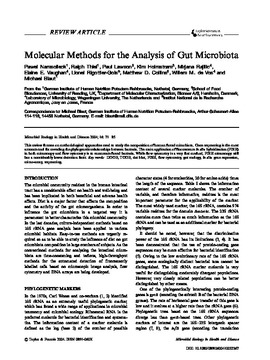| dc.contributor.author | Namsolleck, Pawel | |
| dc.contributor.author | Thiel, Ralph | |
| dc.contributor.author | Lawson, Paul A. | |
| dc.contributor.author | Holmstrom, Kim | |
| dc.contributor.author | Rajilic, Mirjana | |
| dc.contributor.author | Vaughan, Elaine E. | |
| dc.contributor.author | Rigottier-Gois, Lionel | |
| dc.contributor.author | Collins, Matthew D. | |
| dc.contributor.author | de Vos, Willem M. | |
| dc.contributor.author | Blaut, Michael | |
| dc.date.accessioned | 2015-05-27T22:10:57Z | |
| dc.date.accessioned | 2016-03-30T15:30:49Z | |
| dc.date.available | 2015-05-27T22:10:57Z | |
| dc.date.available | 2016-03-30T15:30:49Z | |
| dc.date.issued | 2004 | |
| dc.identifier.uri | https://hdl.handle.net/11244/14645 | |
| dc.description.abstract | This review focuses on methodological approaches used to study the composition of human faecal microbiota. Gene sequencing is the most accurate tool for revealing the phylogenetic relationships between bacteria. The main application of fluorescence in situ hybridization (FISH) in both microscopy and flow cytometry is to enumerate faecal bacteria. While flow cytometry is a very fast method, FISH microscopy still has a considerably lower detection limit. | en_US |
| dc.language | en_US | en_US |
| dc.relation.ispartofseries | Microbial Ecology in Health and Disease;16:71-85 | |
| dc.relation.uri | http://informahealthcare.com/doi/abs/10.1080/08910600410032367 | |
| dc.subject | Biology, Microbiology. | en_US |
| dc.title | Molecular Methods for the Analysis of Gut Microbiota | en_US |
| dc.type | Article | en_US |
| dc.description.peerreview | Yes | en_US |
| dc.identifier.doi | 10.1080/08910600410032367 | en_US |
| ou.group | College of Arts and Sciences::Department of Microbiology and Plant Biology | en_US |
